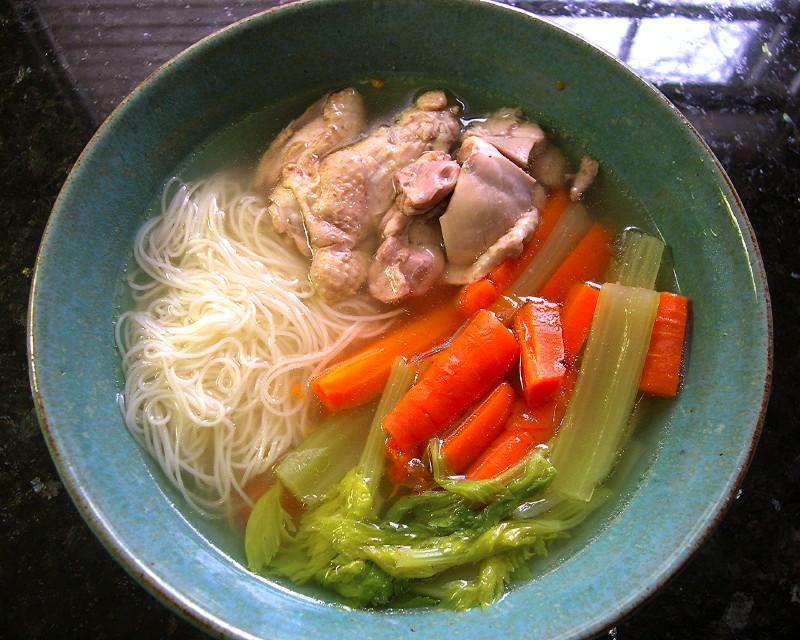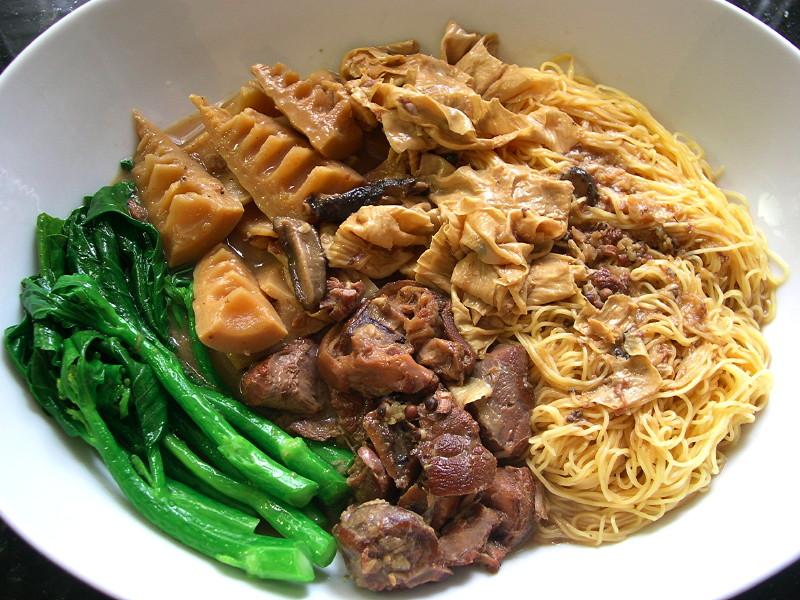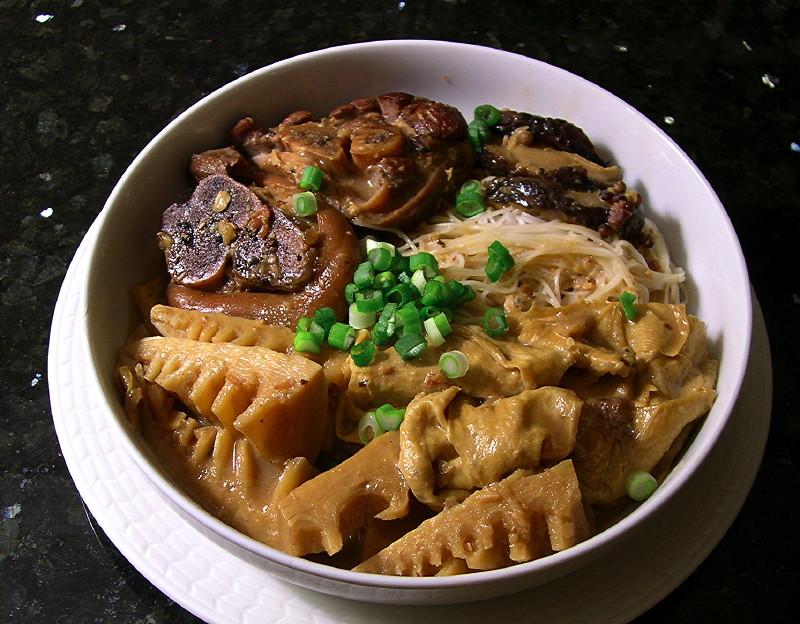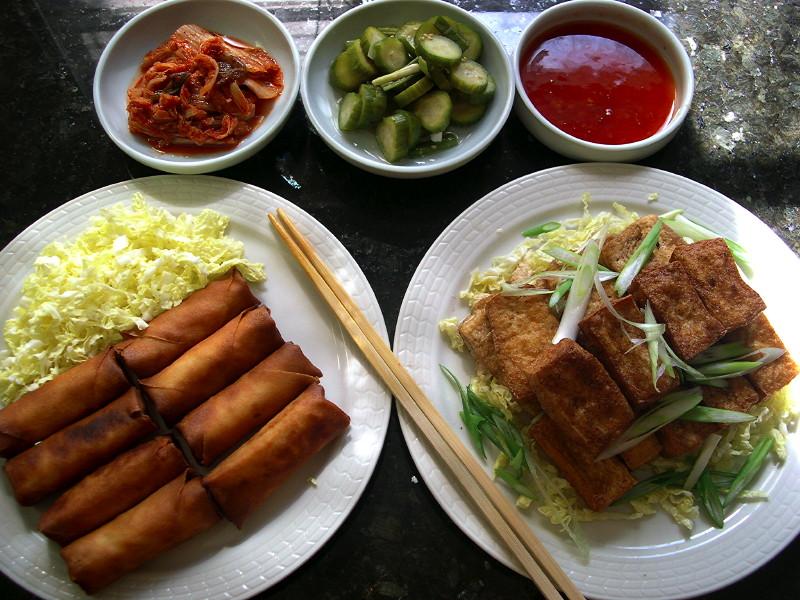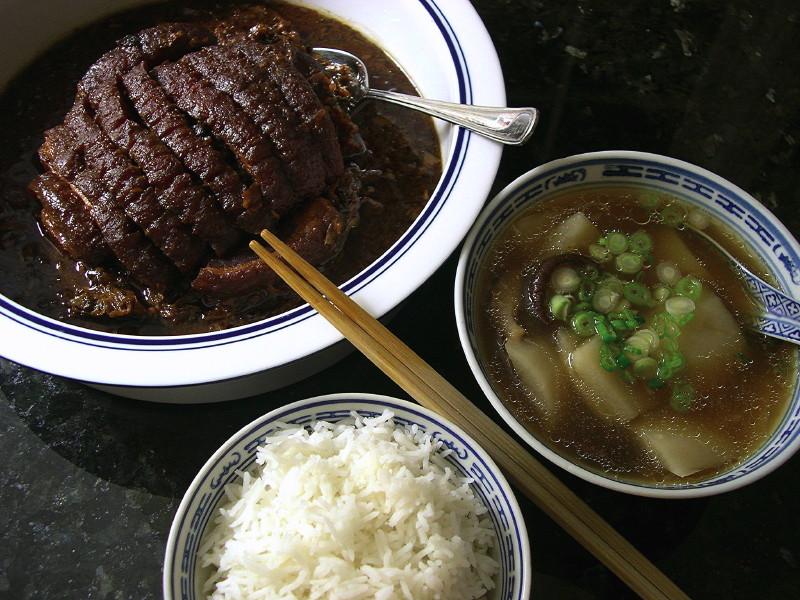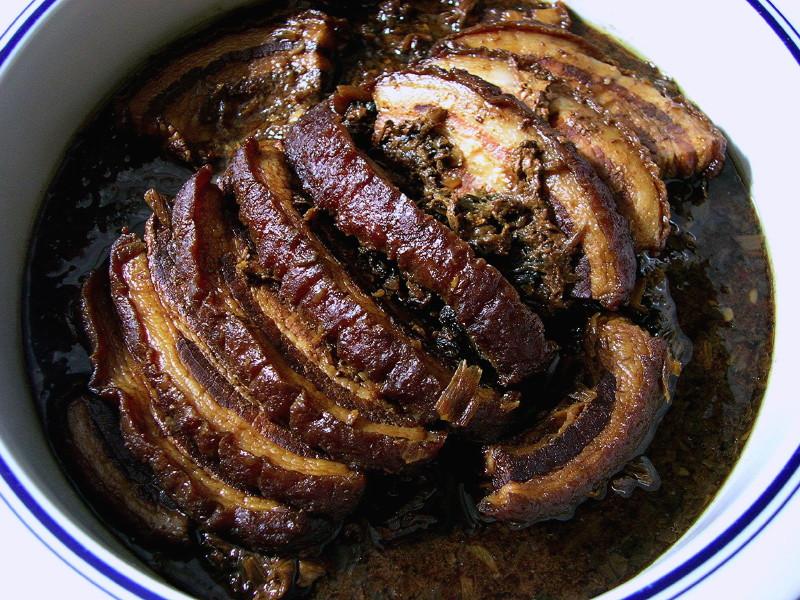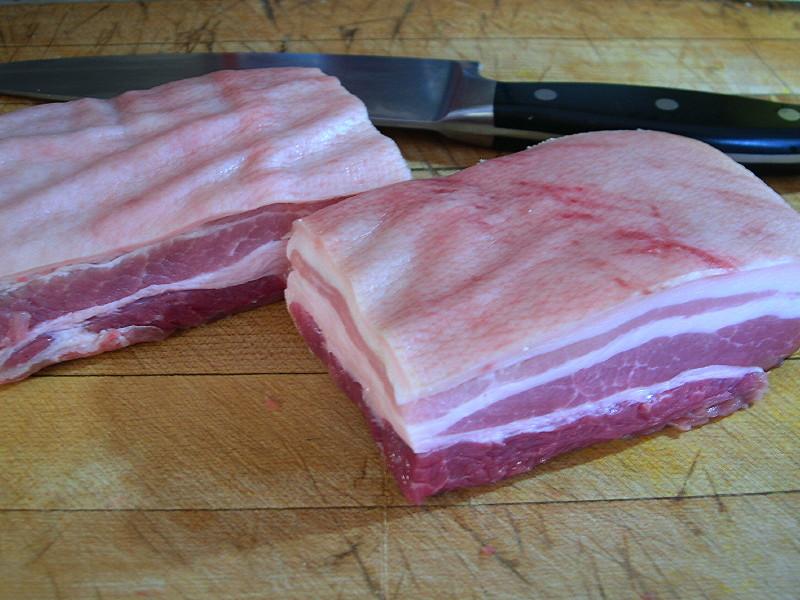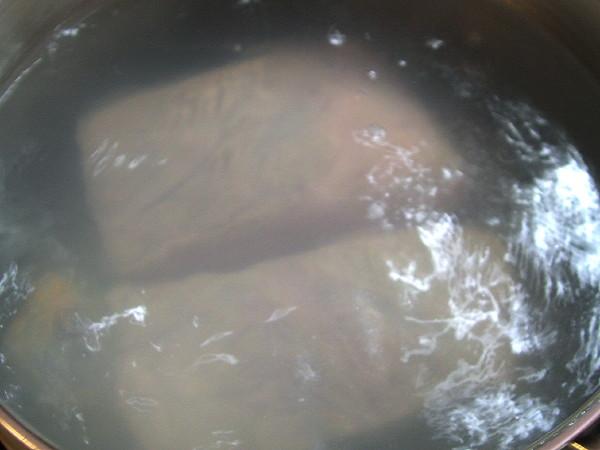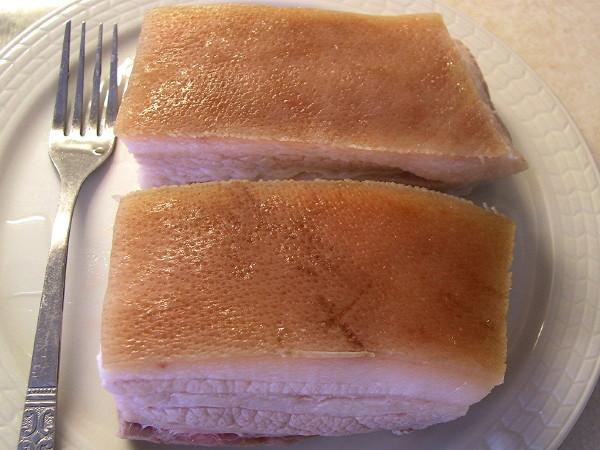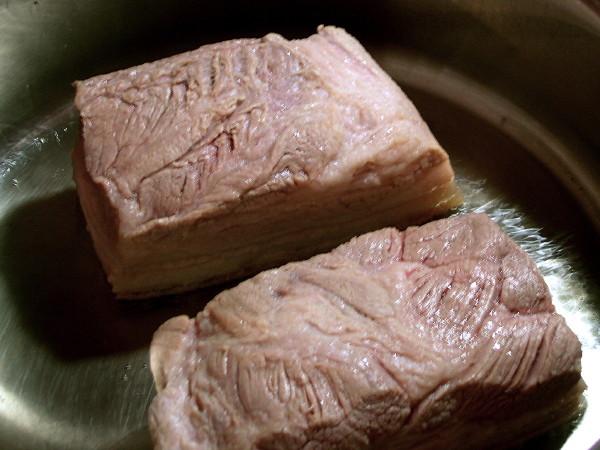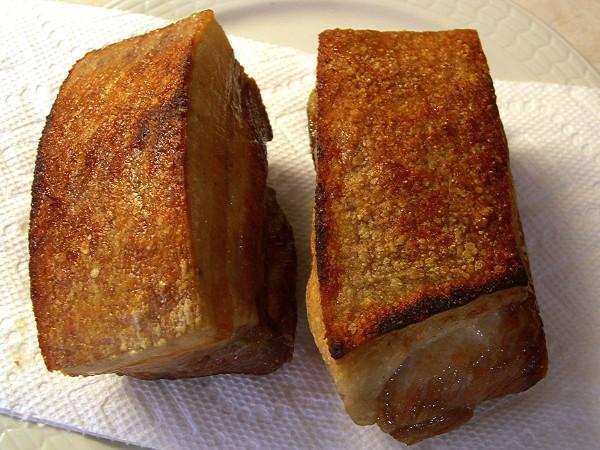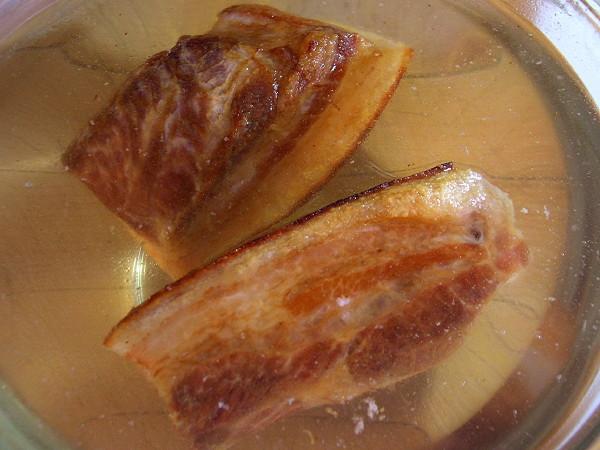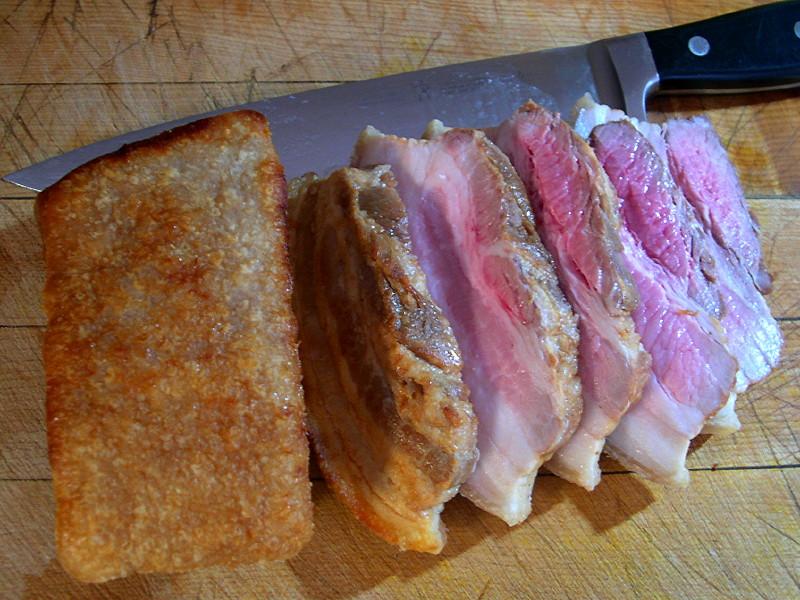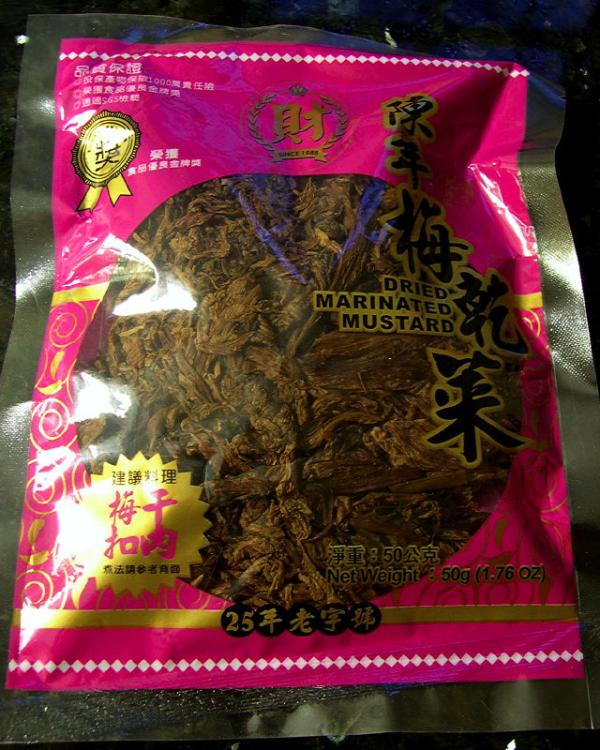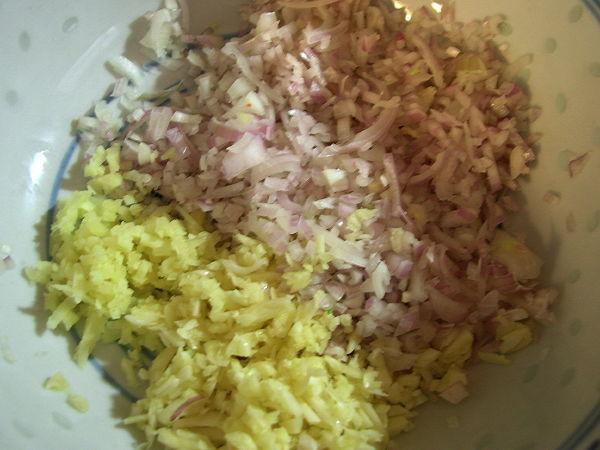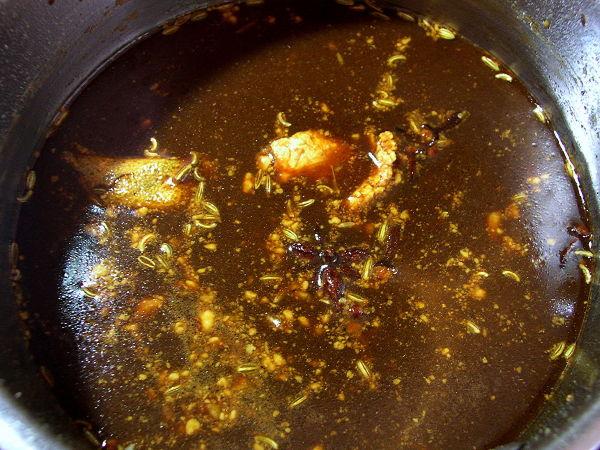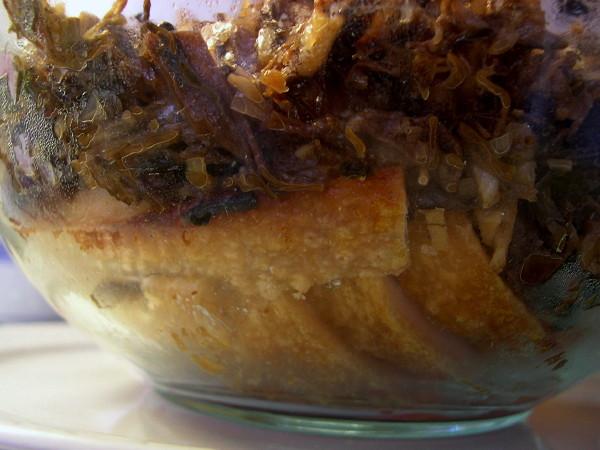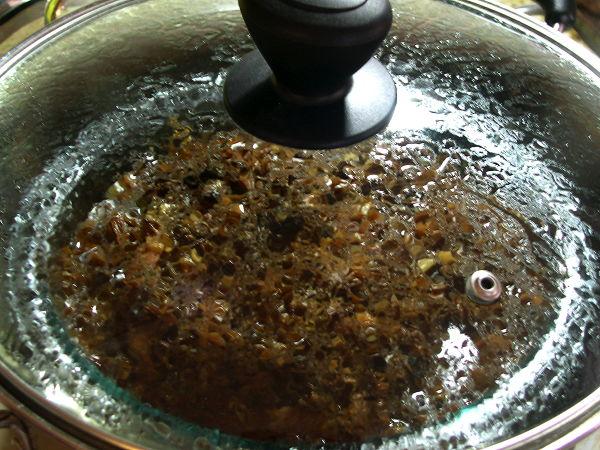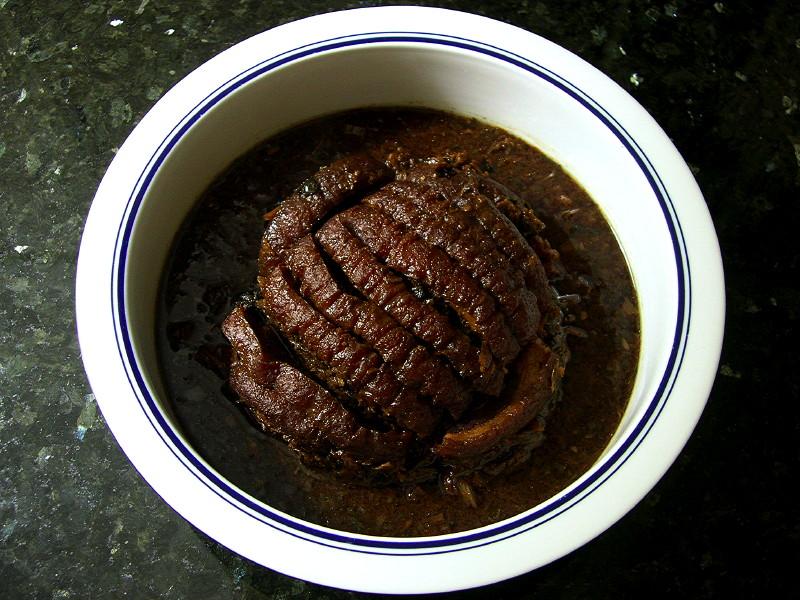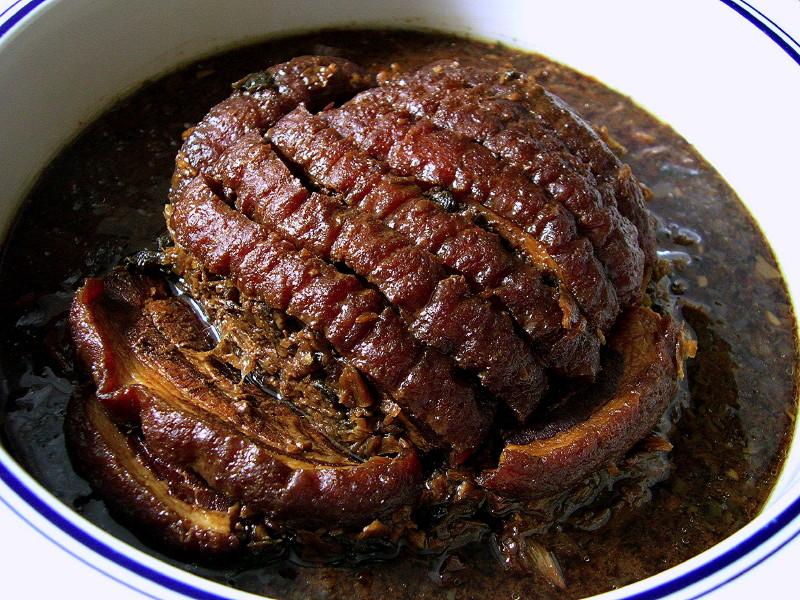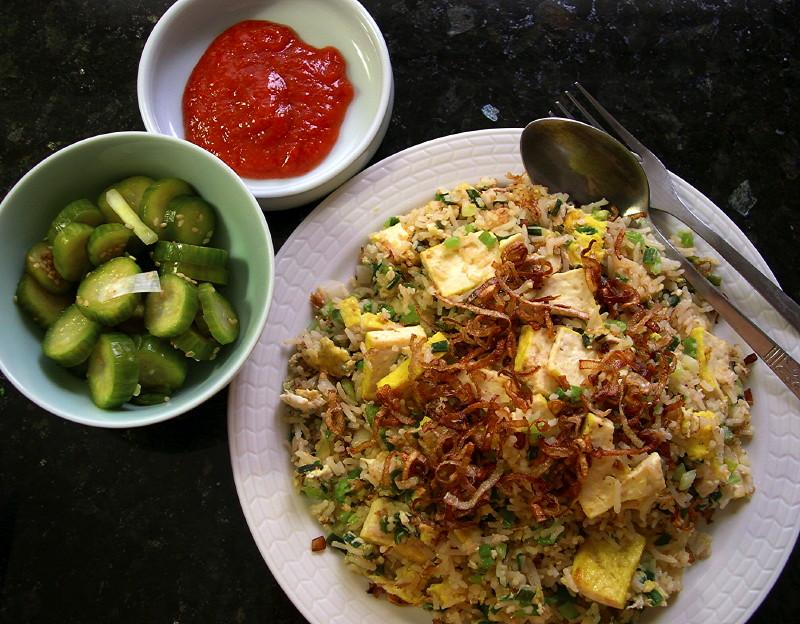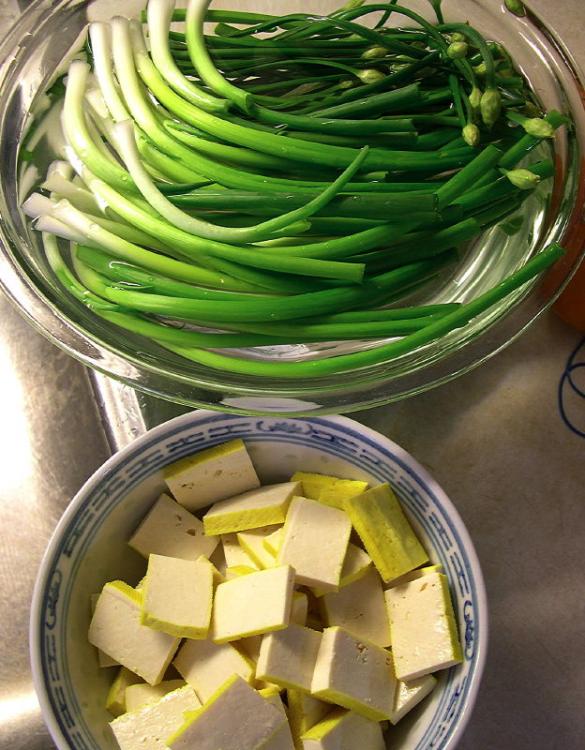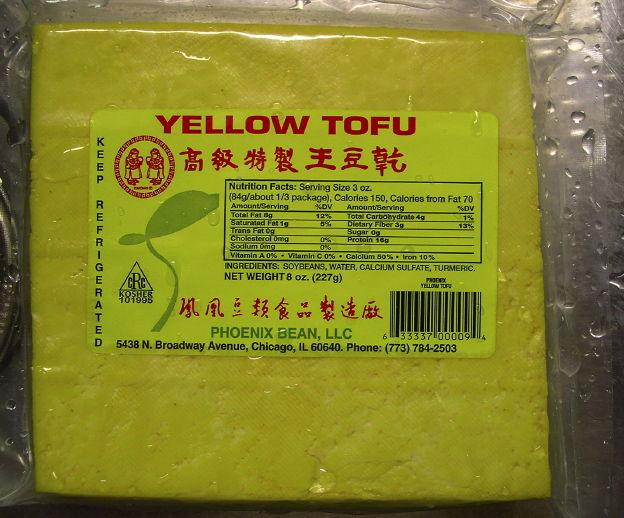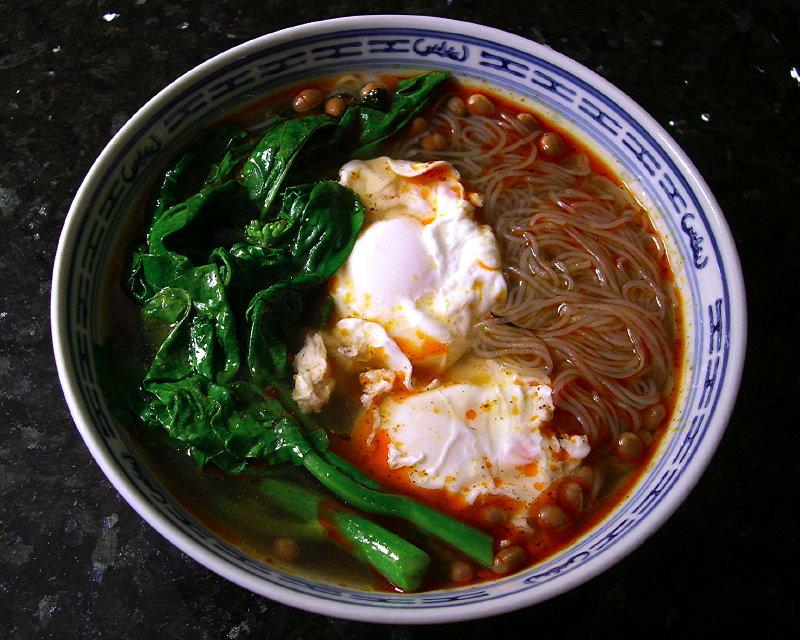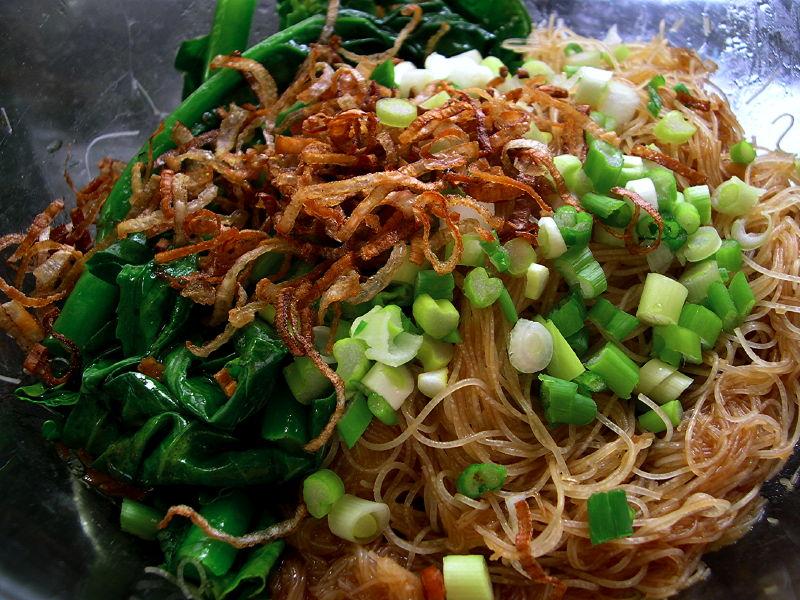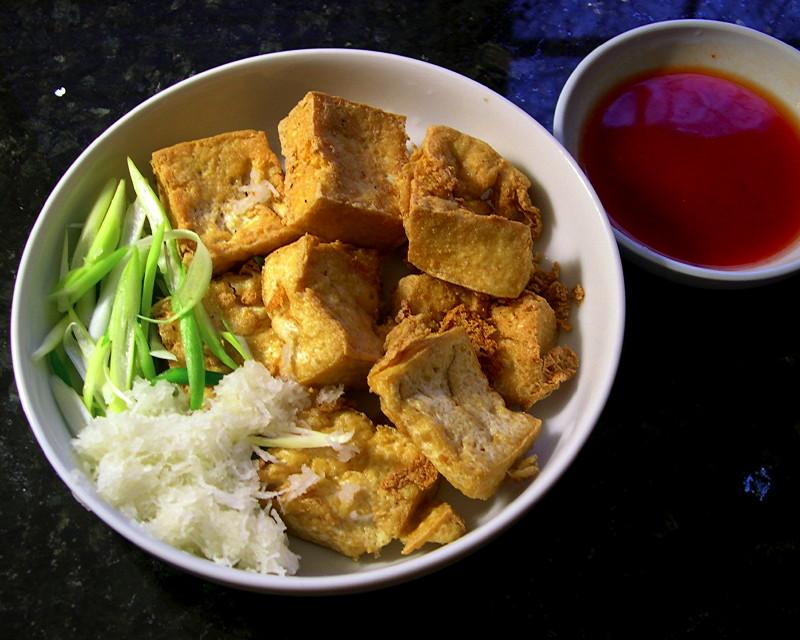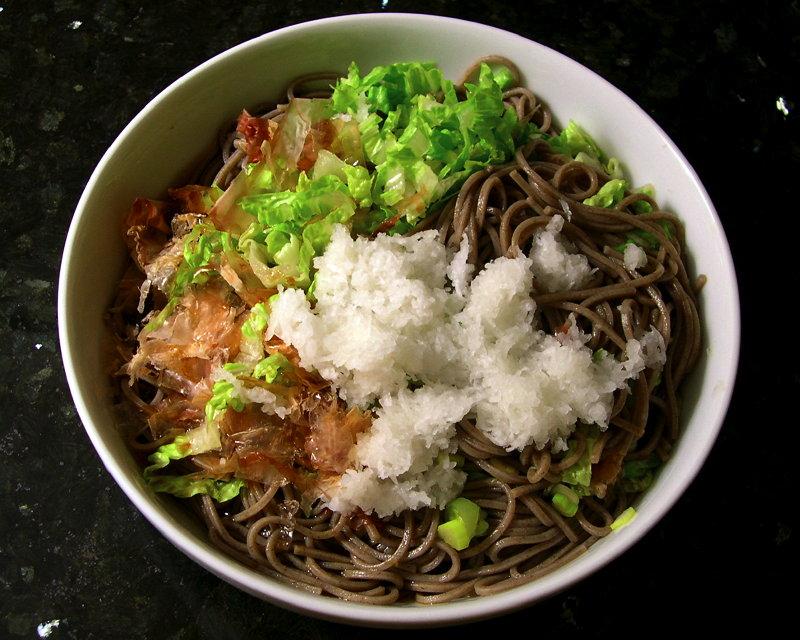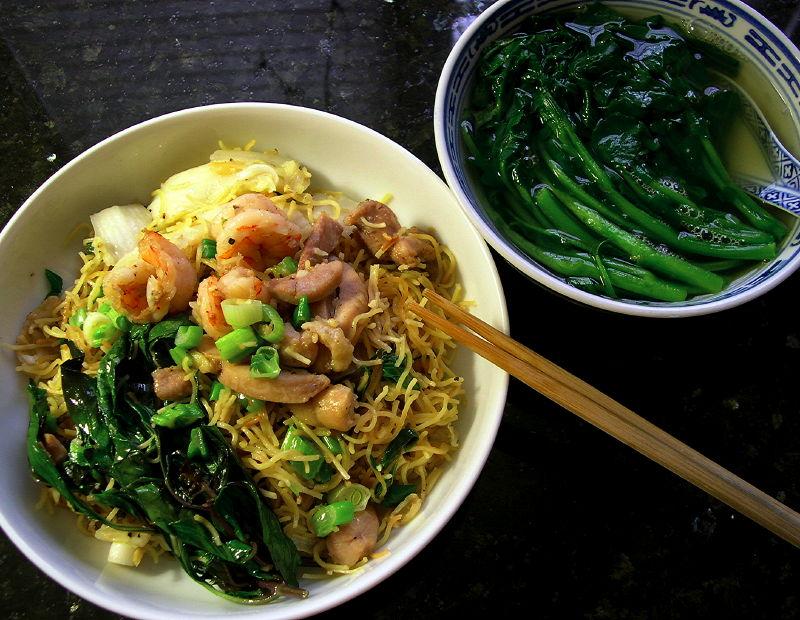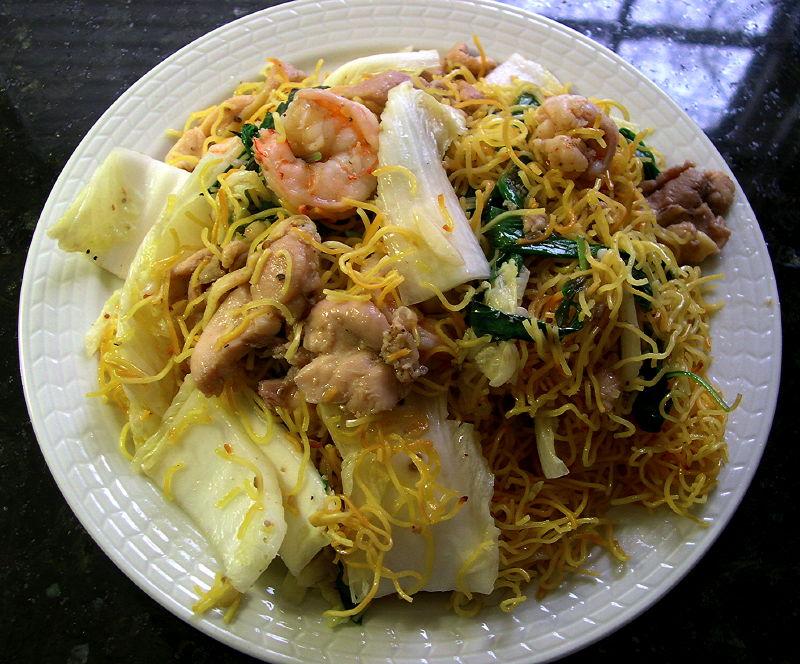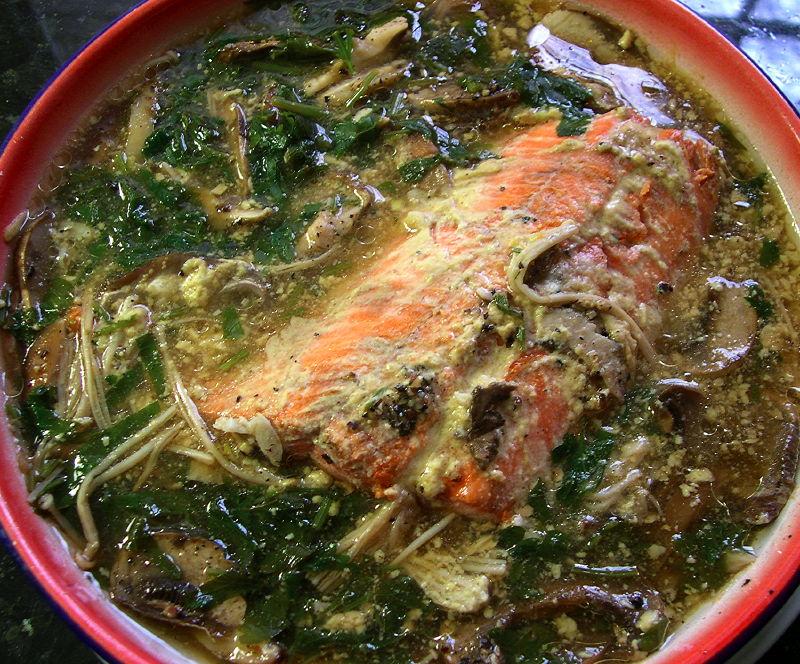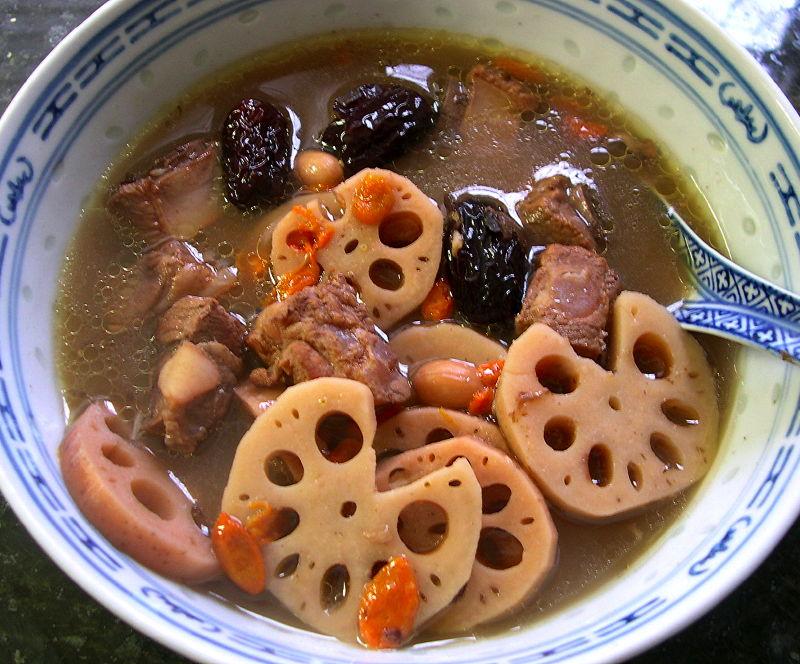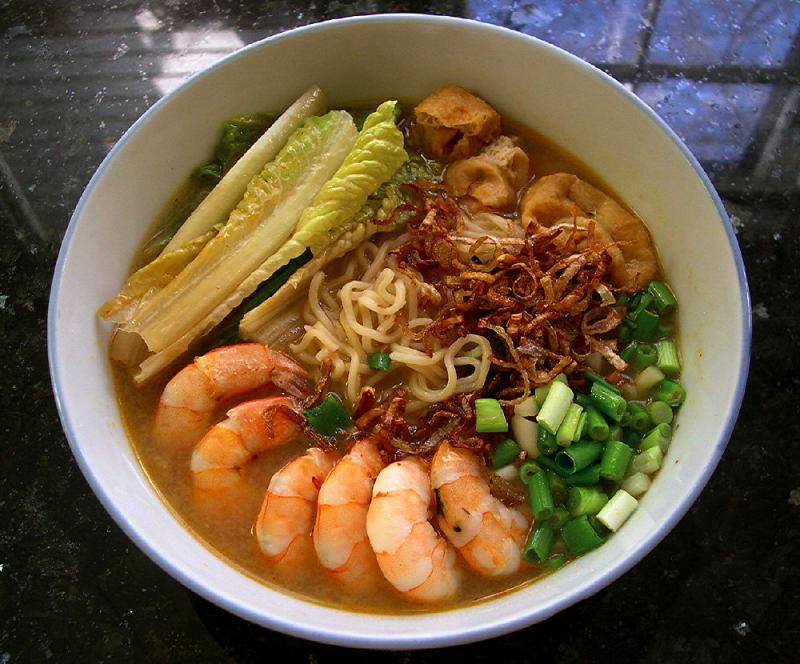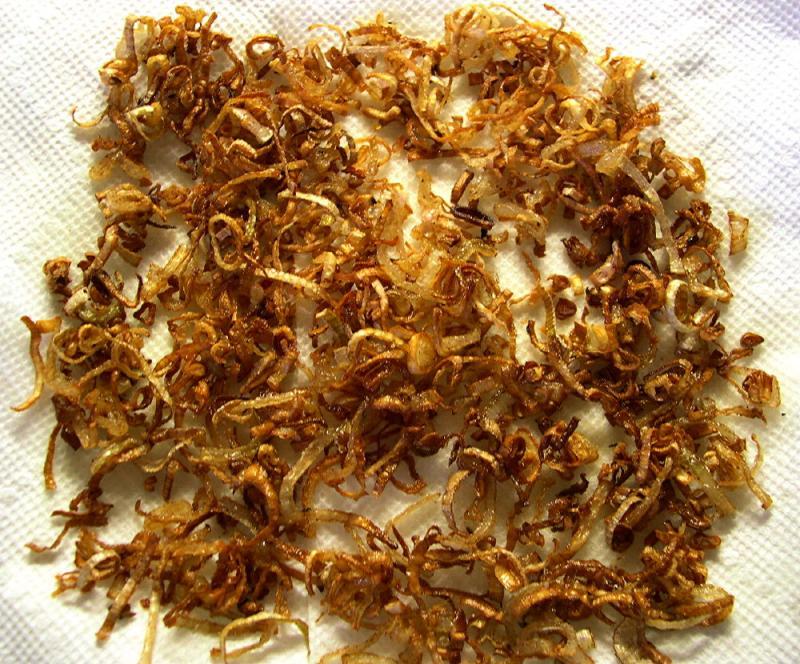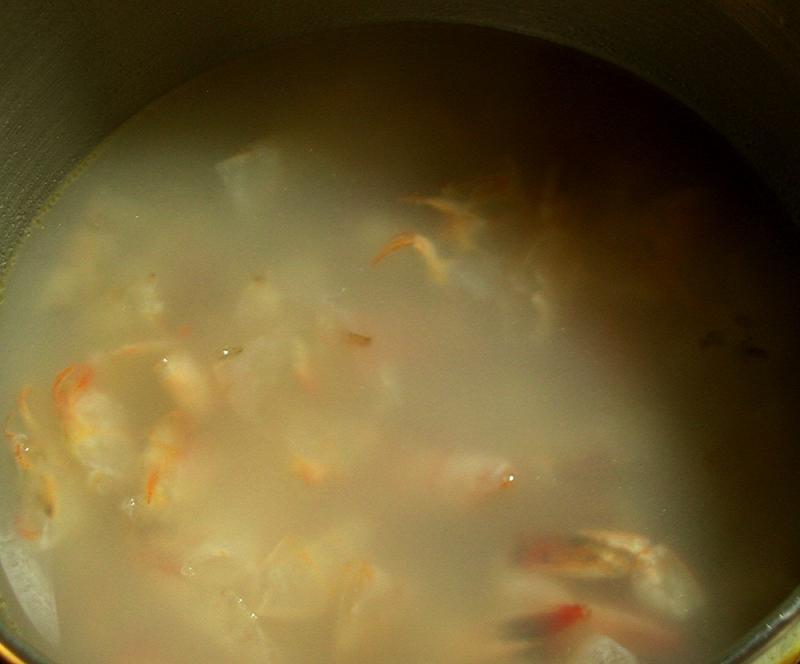-
Posts
3,810 -
Joined
-
Last visited
Content Type
Profiles
Forums
Store
Help Articles
Everything posted by huiray
-
Indeed - as heidih asks, *what* sort of cabbage? Assuming you don't mean things like Napa cabbage, Taiwanese bok-choy cabbage, any number of other types of cabbage etc etc but, instead, mean this type: http://www.photo-dictionary.com/photofiles/list/525/5713cabbage.jpg , then one can still do so many things with it. Some things off the top of my head: • Cabbage soup - cut-up leaves, chiffonaded leaves, etc; with or without a protein; chicken (legs or thighs) and chopped cabbage is nice; • Corned beef & cabbage, as already mentioned; • Stir-fried chopped/chiffonaded cabbage, with the protein of your choice; • Cabbage leaves as a wrap for whatever you like, as a, uh, "wrap" - whether the cabbage leaves are steamed/softened or not; • Stuffed cabbage leaves; • Orak-arek, sliced/shredded cabbage stir-fried w/ eggs and sliced onions (browned first) and lots of white pepper; • As an ingredient in any number of soups and whatnot, spicy or not - try something like Sayur Asem, or Sayur Lodeh; • In place of sauerkraut when cooking any dish that usually uses sauerkraut - e.g. with kielbasa or any number of German/European-type sausages; ditto as a variation on choucroute garnie; • Pickle it; • Make sauerkraut anyway; • Any number of variations of Borscht; Gosh, I could think of many more but perhaps I'll stop here. For myself, "a few heads" of cabbage (the assumed variety) wouldn't go very far at all in my hands. :-)
-
Lunch today: Chicken broth (Bell & Evans chicken), (a portion of which was simmered with) carrots, celery; plus some of the meat, and mee sua.
-
Lunch yesterday: Remainder of the stewed pork hocks (see here), a nice solid mass of blended-in tasty gelatin & stuff after leaving overnight - reheated & served over skinny wonton noodles with blanched kai lan alongside.
-
Heh - yes, the dish does take some effort. There are also, of course, many variations on how exactly to do it and what exactly goes into it. Kow Yuk indeed has two forms - the one with taro yam slices (Wu Tau; 芋頭), which your father and his contemporaries prepare; and the one with preserved mustard greens which I did here. The taro yam version naturally also has variations on its preparation. :-) I gave some links to both forms in a previous post on another thread here on eG. I'm glad you enjoy this dish now when you have the opportunity to do so.
-
Pork hock slices stewed w/ bamboo shoots & fresh Chinese mushrooms. A whole head of garlic (cloves separated, smashed, de-skinned) was sautéed in canola oil then reserved; bone-in pork hock slices were browned; a slurry of aka miso and shiro miso was added, the garlic put back in, the mix stirred/sautéed; sufficient water added, brought to a simmer, covered and cooked for ~1 hr. Trimmed washed bamboo shoots (large head type) & sliced Chinese mushrooms were added plus a generous handful of whole white pepper; simmered for a while; pre-softened fu jook (bean curd skin, formed into rolls; broken up into sections, soaked in water for quite a while) added and the mixture simmered to completion. 3-4 hrs or so in total. Eaten w/ (hand-made) min sin (mee sua) (Fuzhou-type wheat noodles; Taiwanese brand; this one). ETA: link to photo of the wheat noodles.
-
Ditto & ditto. I like the Rosemary one too, the Black Pepper slightly less; but the Plain one is best. So - I usually get the house brand (Fresh Market) of whole-grain seeded Lavash crackers.
-
• Deep-fried soft tofu slices. On chopped Napa w/ sliced scallions. • Deep-fried vegetable "spring rolls" (Chả giò chay). With more chopped Napa. • Baechu kimchi, pickled scallions & cucumbers, sweet chilli sauce w/ lime juice.
-
• Mui Choy Kow Yuk (Hakka-style pork belly with preserved mustard greens) - one version. See here for details. • Daikon & Chinese mushroom soup.¶ • White rice. ¶ Small dried Chinese mushrooms were de-stemmed and soaked in water. A piece of Hayani Konbu was soaked in water (separately). Smashed garlic and some finely chopped shallots were sautéed in vegetable oil and quenched w/ most of the mushroom and konbu soaking water, the soaked mushrooms and the konbu (cut into smaller pieces) added in and the mixture simmered for a short while. The konbu pieces were removed, generous ryori-shu and some jozo mirin added, sufficient "Naturally Brewed Soy Sauce with Hokkaido Kelp Flavor" [Wei Chuan] also added and simmering continued for a bit. Daikon slices (peeled) were added and simmered to completion. Served garnished w/ chopped scallions.
-
Kow Yuk 2014-0307 A version of Mui Choy Kow Yuk (梅菜扣肉) (Hakka-style pork belly with preserved mustard greens). Pork belly pieces: These are from half of a 3+ pound slab, cut into two. Blanched/cooked in simmering water for about 5 minutes. Prickled the skin all over with a fork. Pan-fried on all sides, with canola oil. Soaked in cold water for a while to chill it and to soften the skin a fair bit. Cut into slices about 2/3 inch thick each. In the meanwhile… A pack of the mui choy I used (陳年梅乾菜). (“aged dry mustard greens”) This is different from the “traditional” one more often used for this dish – which would be whole plants of mustard, preserved/pickled w/ salt (+ a little sugar) or sugar (+ a little salt), and would be “wetter” and either much saltier or sweeter (depending on the variety) and would require more extensive soaking. These “aged dry” greens were swished briefly in a bowl of room temperature /lukewarm water just to loosen up the mass and to get rid of (most of) any residual grit, then drained in a colander. Mixed with some of an earlier batch of these greens that had been soaked for much longer in water and which had resulted in almost all the flavor being leached out into the now brown (and tasty) water. Squeezed lightly, then chopped up further. Pan-fried/sautéed w/ chopped smashed garlic, finely chopped ginger and finely chopped shallots (a fair bit) in part of the pan residues (which also contained rendered lard) from frying the pork belly pieces, diluted w/ some canola oil. (The mustard greens went in last, of course) No picture, sorry. Forgot to take one. Also in the meanwhile… A sauce/marinade was made: Several cubes of white preserved beancurd in sesame oil (麻油白腐乳) were mushed up and gently “fried” in a little peanut oil then quenched w/ a mixture of Shaohsing wine (a fair bit), oyster sauce, yellow rock sugar, light soy sauce [i used Pearl River Superior], dark soy sauce [i used Yuet Heung Yuen], one cinnamon stick, about a dozen whole cloves, two whole star anise, some whole fennel seeds, a couple pieces of dried tangerine peel (陳皮), a few thin slices of ginger, a generous knife-blade-end’s-worth of five spice powder; followed by about two cups or so of warm water. Simmered (partly covered) for a while to develop flavor and to blend. The sauce is salty-tangy with a *definite* sweetness to it. Pic of: 1) the chopped garlic, shallots and ginger used for frying with the rinsed mustard greens; and 2) of the sauce/marinade in the pan on the stove after everything had just been combined (before simmering to blend): Assembly: Pork belly slices, skin-side down, into a pyrex bowl; arranged side-by-side with two shorter slices “capping” the arrayed stack. The fried mustard greens-shallots-ginger-garlic mixture went onto the pork slices, with some of the mixture worked between each slice and also around the pork belly slices. The sauce/marinade was poured over the assembly, straining through a tea-strainer sieve. The whole shebang was steamed for 6+ hours, with the water at a very gentle boil; water replenished as needed. Plating: a deep dish was placed over the bowl+contents (removed from the steaming pot, of course) and the whole thing quickly turned over (done over the sink, just in case!) while holding the two parts together firmly. (With a heat pad held on the bottom of the pyrex bowl) Ta-da. Eaten with white rice and a Daikon-Chinese mushroom soup. (See the “Dinner” thread for this)
-
Very interesting, Anna N. Thanks for the link. I found comment #8 additionally informative.
-
The only crepes I am nostalgic for are Crêpes Suzette. Everything else is nice, but not something I hanker for. Unfortunately here in the USA this dish is a rare one and seems to be increasingly so. I still remember an occasion in Golder's Green, London, when I was living there many many years ago, in a restaurant known for its Crêpes Suzette when the waiter/server might have used too much brandy and the resultant flambè was a little, um, VIGOROUS. Fortunately, no one was hurt and the ceiling escaped relatively unscathed.
-
Fried rice. Smashed garlic, canola oil, chopped Chinese garlic chive flowers, sliced yellow firm tofu, three farm eggs scrambled in situ, 2-day-old Basmati rice, chopped scallions, the remainder of the sauce for the mei fun from the previous day, white pepper. Dressed w/ deep-fried shallots. Eaten w/ pickled scallions & Japanese cucumbers; plus Cap Jempol Chili Sauce. The tofu and the green stuff.
-
Early breakfast today: "Hot & Spicy Flavor Instant Vermicelli" { 四川風味 麻辣燙味方便粉絲 ('Szechuan-style "mala"-burning taste/spicy flavor instant vermicelli') } [Guangyou (光友)] (these are sweet potato starch noodles (with cassava & corn starches as well). Dressed w/ poached eggs (done separately) & leftover blanched kai-lan.
-
cool, still not quite sure I understand though - the article says that parthenocarpic plants don't require the flowers to be pollenated to produce fruit... not sure why that means the fruit doesn't have seeds in it? How does a lime do the job of growing into another lime tree if it doesn't have seeds? Fully parthenocarpic fruit require no pollination (this goes back to the bananas, the edible cultivars of which are pollen-sterile triploids). This means that there are no seeds, because seeds are the result of pollination. However, limes are not strictly parthenocarpic (they canproduce fruit with no pollination, but they can also do it with a pollen partner) so they're also not strictly seedless. Here in Ecuador, they're generally seedier than lemons. The other thing about limes, though, is that they require a pollen partner that's sufficiently genetically divergent from them in order to set seeds (meaning they can't self-pollinate) - and here at least, export quality limes are grown in plantations where every tree is a clone of a single mother. That's not enough genetic difference for them to produce fruit sexually, so they produce fruit asexually instead. In these cases, to answer your question, the trees aren't producing fruit to create another lime tree; instead they're fulfilling the imperative of not wasting flowers. Calamansi limes also have PLENTY of seeds. :-)
-
That Seamus Mullen way is not new. It's the (old) common way of cutting limes in SE Asia. See here for an example.
-
Lunch today: • Mei fun (skinny rice noodles) tossed w/ a sauce of {(chopped smashed garlic sautéed in canola oil) quenched w/ a mixture of Bull-Dog Worcestershire Sauce, black sesame oil, LKK Drunken Chicken Marinade, YHY Superior Dark Soy Sauce, Nước Mắm Pha Sẵn, Red Boat Fish Sauce, Ryori-shu, Mirin-fuu, and fresh lime juice}. Dressed w/ chopped scallions & deep-fried sliced shallots. Paired w/ Kai-Lan blanched in hot/boiling oiled water. • Leftover lotus root soup from a few days ago.
-
wokkingtall, the smoke factor isn't bad at all - not none, but fairly minimal. The aroma is certainly present, though. I have smoke alarms also and they didn't seem disturbed by this.
-
Early dinner last night: • Deep-fried firm tofu chunky slices, sort-of an atsu-age., a.k.a. 炸豆腐 (Yale Cantonese: ja3 dou6 fu6) using Chinese terminology. The tofu was pressed for a bit to get more water out of it before slicing and frying. Eaten with sliced scallions, grated raw daikon and a sweet chilli dipping sauce [Lingham's] mixed with fresh lime juice. • Soba noodles (with yam); dressed with finely chopped Romaine lettuce heart leaves, katsuobushi, chopped scallions, grated daikon, and soba shoyu [Assi] mixed with a little Izu oroshi-wasabi paste.
-
Breakfast today: • Leftover pan-fried noodles w/ stuff, augmented w/ more fresh Thai basil & chopped scallions. • Watercress wilted in chicken broth w/ some dashi flakes as well.
-
Sunday lunch: Pan-fried Hong Kong style noodles; w/ large shrimp, chicken dark meat, garlic, wong nga pak (Napa cabbage), Thai basil, various sauces.
-
Yesterday's lunch: • Sockeye salmon fillet (skin on) marinated in and steamed w/ Dijon mustard, rice wine (ryori-shu), sweet mirin (mirin-fuu used), canola oil, salt, pepper, lemon juice, white mushrooms, enoki mushrooms, parsley. • Lotus root soup. Made with canola oil, chopped smashed garlic, short-cut pork spare ribs, salt, water, honey jujubes, lam jou variety of dried jujubes, dried scallops, Goji berries, fresh lotus root scrubbed/peeled as needed sliced into rounds. • White rice (Basmati). (not pictured)
-
Ann_T, I'm a little curious about your background in this photo. There is a clear discontinuity in the "image" of what would otherwise be a table with stuff on it in the background, and it is not obvious that it is an angled mirror or something like that (and the reflection/placement would be 'wrong' relative to the plate of tacos) Was it wallpaper or a collage of some sort? What is this background?
-
Look here and here for examples of pictures of what I have in my garden/on my deck. The leaves on the biggest plants that come up and that I allow to grow can be pretty big. This is the Vietnamese variety, not the Japanese one (shiso), which is either all green or all purple. Vietnamese perilla is often used in rice noodle dishes/noodle-soup dishes; braises, stews, etc - as a garnish, mostly. Japanese shiso is used in a similar manner and as a garnish on sashimi/sushi plates quite frequently. It's not that I really dislike it (or hate it) but it's just that I seldom make dishes that call for its use, or when I do just don't end up using it because it would not be the most urgent taste for me to incorporate (for my taste), true. I planted the first ones some years ago just for the hell of it and discovered that it was the gift that kept on giving. :-)
-
Quasi-prawn mee. Shrimp shells simmered in water w/ a little Himalayan salt & peanut oil. Shells removed. Indomie Penang Har Mie instant noodles cooked in this, plus tau foo pok (deep-fried tofu puffs), shelled wild American shrimp (tails on), Romaine lettuce heart leaves. Freshly deep-fried sliced shallots & chopped scallions scattered onto the bowled stuff. Deep-fried shallots: Shrimp shells simmering:
-
I often use basil like a vegetable, particularly the "standard" Italian-type basil or Genovese basil, both of which I also grow in season. Ditto Thai-type or Vietnamese-type basil (húng quế). I use them (suitably trimmed) in soups and stir-fries, in vegetable-sized portions - fistfuls of them, leaves-on-tender-stems and flowers and all. I also grow at least two varieties of Thai/Vietnamese basil each year. I frequently buy big bunches of all of them as well. I sometimes also grow Holy Basil, Purple basil, etc as well. I used to grow up to a dozen varieties but I gave that up some years ago. On my part I am very reluctant to buy (Western-type) basil, the "usual variety", at Western supermarkets in my area. It's exorbitant in price. So, out of season, I get fresh (Western) basil from those places only if I have to. In season it would come from my own plants or from the Farmers' Markets by the bunchful. Thai/Vietnamese basil is a different story - even in the dead of winter I will get the stuff from my local Chinese grocery or the International market. Previously I got it from the grocery half of a Vietnamese restaurant-cum-grocery, 1-2 pounds at a clip (after asking the proprietess); they got their stuff from Texas. I think my current Chinese grocery gets it from California. Or, from the Vietnamese groceries in Chicago (usually around Argyle Street) when I am there. During spring-summer-fall I also have my own plants. One thing that dried basil is nice in is rice, I find. Just add some (I am generous with the quantity) to the pot when making rice (in the "usual" manner) scattered on top of the water, with or without a bit of salt and/or oil if desired - I usually add just the dried basil. Makes for a nice change. The "Western-type" herbs I commonly use and grow (other than basil, already mentioned) would include: • Thyme (typically 'English', 'French', 'Lemon', 'Silver'...) as fresh thyme or dried (out of season, or just for the hell of it) - in stews, sautés, braises, whatever. • Rosemary (I currently have a fairly large standard overwintering in my breezeway :-) ), 'Logee Blue' if I can get it. • Parsley (Italian) - I grow it in season, buy it at other times and as needed; used in the "normal way" generally; or in special dishes like this one (scroll down) where I use lots of it. Sometimes I'll use it almost like a vegetable - e.g. a fistful or two tossed into chicken broth to wilt and simmer for just a minute or so, then eaten together w/ the soup. • Sage (Common type) - this one is very hardy and survives the winters outside most of the time. Used once in a while, usually in pork-type dishes. •Tarragon (French) - this also usually survives outside (but this winter has been very bad...we'll see if it comes back this year). Used in some omelettes, egg dishes, in sautés w/ chicken especially (e.g. chicken w/ mustard & tarragon) &etc. • Oregano (indeterminate variety; typical "Garden Center" stuff, probably a Greek-derived/Mediterranean cultivar; but NOT Turkish or Russian, which are visibly distinguishable varieties and which I dislike) - also winter-hardy most of the time. I would consider Russian Oregano to be definitely an ornamental. :-) (I've grown it) I also use the dried stuff; while I get dried "Mexican oregano" (actually Lippia graveolens) from the Supermercado here. Used in typical manner - stews, braises, meat sauces for Italian-American pasta dishes, etc. I rarely use (or grow) marjoram. I also often have a pot or two of Vietnamese coriander (rau răm) a.k.a. Laksa leaves &etc during the growing season, but not always. (indoors/overwintering - they get very leggy) Those go into, yes, laksa-type or curry-type dishes, or get used as a veggie in stir-fries also. (See: Persicaria odorata) I also buy this on occasion. The most commonly used herbs for me would be scallions/green onions and coriander leaf/cilantro, both of which I buy - usually from the local Chinese/"Asian" grocery, rarely from the Western supermarkets (big cost difference). Used in all sorts of ways, ranging from being components of the dishes (typically E/SE Asian cuisines) to garnishes for the dishes. Occasionally I'll get Japanese-type (negi) or large-type Chinese "scallions" (大蔥). Sometimes I'll get Chinese chives (韭菜; Allium tuberosum; garlic chives) or garlic chive flowerbuds (韭菜花) (they are bundled/sold separately) - for use in various soups, braises, stir-fries, omelettes, etc. Once in a while I'll pick up some yellow Chinese chives. Uses - same as for the green type, but these have a more delicate flavor. I guess these would also be used on a "vegetable scale" frequently. I can't remember the last time I picked up Western chives for home use, although I've eaten it incorporated in various dishes in Western restaurants, of course. On occasion I will get some mint (usually spearmint or similar; sometimes applemint; for salads, some SE Asian/Vietnamese dishes, etc), or rarely things like culantro (ngò gai'; Mexican coriander; Eryngium foetidum) when I make Phở, for example. I also sometimes buy lemongrass for some Thai/Vietnamese/Malaysian dishes. My Mint Juleps I'll leave to bartenders hither and yon. My Gawd, I remember the mint juleps I had (with my companion) in Savannah, GA on the eve of a hurricane, in a bar on the riverfront deserted except for the two of us and the bartender who grew his own mint in his backyard. :-) I do also have perilla (Vietnamese variety - tía tô) growing outside in season - in fact, the damn thing is all over the place (it seeds itself with wild abandon into every nook and cranny and even into the lawn!!) but I actually rarely use it and in the last couple of years have been pulling up wayward plants of it by the bushel, it almost seems, and tossing them - but I'll give them to a local shop this year...) ETA: Oh, I forgot - Bay leaves, of course. Laurus nobilis in particular. I do not use California bay or Indian Bay. I've had bay trees (standards) or bushes over the years and have tended to lose them to the Big Garden In The Sky - because overwintering them indoors somehow seems to be hard to do in my hands. They're also big scale magnets. I usually buy and use them as dried leaves nowadays - in all sorts of soups/stews/braises. I also used to grow Murraya koenigii (கருவேப்பிலை; "curry leaves") but usually buy them (fresh, of course) from Indian groceries nowadays. I use them in Southern Indian style curries. I have (and use) various dried Chinese herbs such as the ones I listed in the post on (a recent batch of) Bak Kut Teh that I linked to in my previous post above. They usually go into soups.



